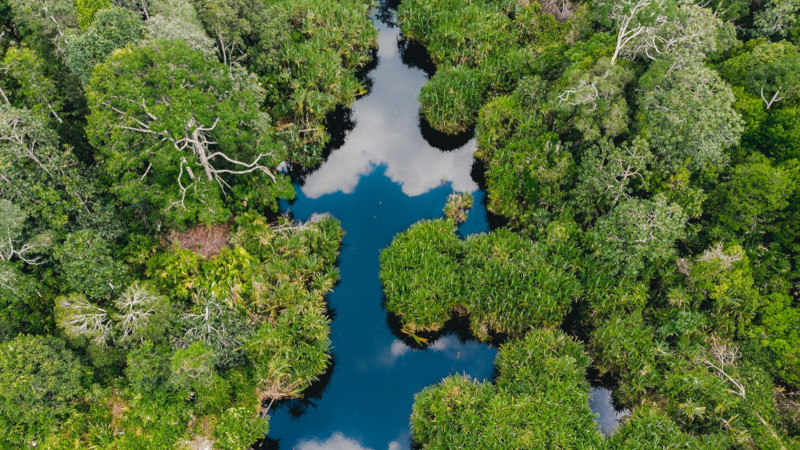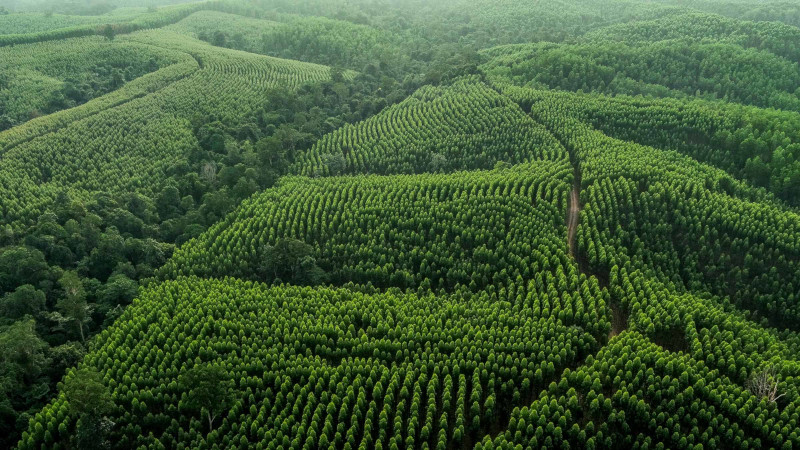April 21, 2025
Every 22 April the world celebrates International Mother Earth Day, which also known as World Earth Day or Earth Day. Earth Day was created to raise awareness about environmental issues and inspire collective action to protect our planet. First celebrated on April 22, 1970, it began as a response to growing concerns about pollution, deforestation, climate change, and the loss of biodiversity. The goal was to unite people—governments, communities, and individuals—in promoting sustainable practices and caring for the Earth.
Today, Earth Day is celebrated around the world and serves as a powerful reminder of our shared responsibility to preserve the environment and build a healthier, more sustainable future for all.
What is happening today is the sum of our actions. Climate change, man-made changes to nature, such as deforestation, land-use change, intensified agriculture and livestock production or the growing illegal wildlife trade, can increase contact and the transmission of infectious diseases from animals to humans.
As the world strives for a more sustainable future, we must rebuild in harmony with nature. The private sector, as the engine of progress, plays a crucial role by increasing investments in nature-based solutions like ecosystem restoration.
Restoring Forest in Kampar Peninsula and Padang Island
During the UN Decade on Ecosystem Restoration, we are preventing and reversing ecosystem degradation so we can create a healthier planet. Ecosystem restoration means assisting in the recovery of ecosystems that have been degraded or destroyed, as well as conserving ecosystems that are still intact. Healthier ecosystems, with richer biodiversity, yield greater benefits such as more fertile soils, clean water provision, flood control, climate regulation and larger stores of greenhouse gases.

In 2013, APRIL, one of Indonesia’s leading pulp and paper companies, initiated the Restorasi Ekosistem Riau (RER) program. Today, RER is one of the largest ecosystem restoration programmes in Southeast Asia. It aims to protect and restore more than 150,000 hectares of ecologically important peat swamp forest in Kampar Peninsula and Padang Island in Riau Province, Sumatra.
In restoring and protecting the landscape, RER employs an integrated production-protection landscape model. This integrated approach is based on the location of productive fiber plantations on the perimeter of RER, which work to protect the interior peat swamp forest and peat domes.

APRIL’s sustainably managed acacia plantations create a buffer zone that reduces human encroachment, illegal logging and fires. The plantation ring also provides a renewable fiber resource to produce added-value products such as pulp, paper and viscose that generate economic returns and provide employment opportunities.
This has proven to be a reliable, consistent and effective approach to support restoration in Indonesia, especially given the significant financial and technical resources required to maintain the program over time.
A decade into its journey, RER has shown incremental and steady progress. RER is continuously improving its biodiversity counts from around 500 species of plants and animals in 2016 to over 890 species today.
Forest restoration and active protection by RER rangers are also bringing back the peat’s moisture, and in several locations we are able to bring back seasonal flooding which is vital to a healthy peat swamp forest. This makes the area less susceptible to fires.
Moreover, a Normalized Differential Vegetation Index (NDVI, which is an indicator of forest health) from 2012 to 2018 showed a continuous improvement in the above-ground biomass conditions of peat forests on the Kampar Peninsula.
Collaborations and Communities
Collaboration has been a cornerstone of RER’s approach. RER continually advances scientific exploration by welcoming expert researchers from around the world across various fields. Recently, RER hosted wildlife conservationists to support the study and preservation of the Malayan sun bear (Helarctos malayanus). We also conducted a baseline survey of dragonflies and damselflies (Odonata) identifying a total of 100 species on the Kampar Peninsula.
More than 55,000 people live on the riverbanks and coastlines outside the RER restoration concessions , making community participation in sustainable livelihoods a crucial focus. Through collaboration, RER promotes long-term community well-being by providing education, and economic diversification programs that emphasize responsibility and sustainability.
Restoring the earth is not an easy task. That is why we need everyone to step up, including business. The RER model is a proof that you can both produce from a landscape, as well as protect it.
Let us be reminded again. We only have one planet, let’s restore it!